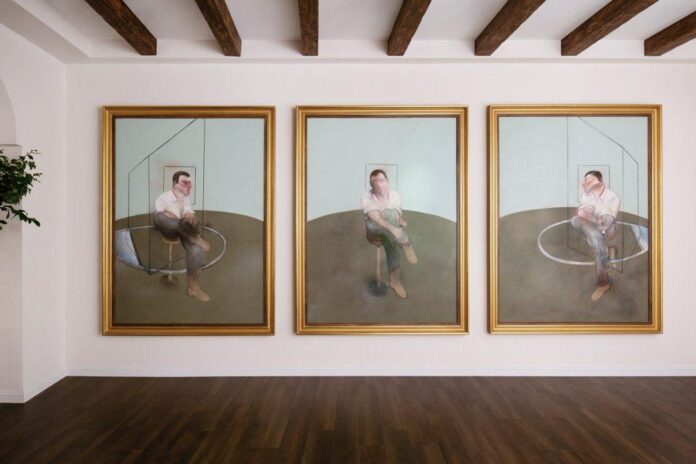Every month, hundreds of galleries add newly available works by thousands of artists to the Artnet Gallery Network—and every week, we shine a spotlight on one artist or exhibition you should know. Check out what we have in store, and inquire for more with one simple click.
What You Need to Know: The human face has defined art since some of the earliest creations, acting as a mirror and mask of the world and a powerful force of attraction and repulsion. In Western art, canonical artists from Rembrandt to Vincent van Gogh have centered the visage, often their own, at the center of their practices. Now, a new exhibition “The Loss of Human Face?” at Hong Kong’s Villepin is considering the ways in which the upheavals of global war, environmental crisis, and pandemic over the past century have morphed the ways in which artists depict the face. The exhibition centers around the works of five blue-chip artists—Francis Bacon, Adrian Ghenie, Zeng Fanzhi, George Condo, and Yukimasa Ida—and seeks to show how they have used the human face to reflect deeper truths behind the visage of humanity.
Why We Like It: With some 20 works on view, the exhibition presents Bacon, one of the most influential portrait painters of the 20th century, as a point of departure, with his distorted subjects’ faces revealing their raw, at times challenging psychologies. Ghenie’s portraits offer similarly gestural brushstrokes that question the role of historical memory, while the social tensions of life in contemporary China define Zeng Fanzhi’s famed “Mask” series. Condo’s characters offer both grotesque and whimsical configurations, and Ida’s thickly painted canvases carry the historic medium forward with a futurist perspective. Through their diverse backgrounds, the artists conjure human faces that in their own ways reveal the intensities, apprehensions, rages, and passions of their time and place. Ultimately, the exhibition asks if the human face is, indeed, decipherable, or whether it has been lost to a world of increased technological detachment.
According to the Gallery: “In a world beset by war, crisis, and a pandemic, many are overcome by fear and anxiety. As a gallery, we wanted to question how art can help us navigate new paths to hope. Bringing together this exceptional group of artists, we invite visitors to come face to face with the distortion, destruction, and metamorphosis of their portraits that stand as a flag to humanity. These works challenge us to reflect on our own fears and aspirations, revealing new ways of understanding ourselves and each other in this fragmented world,” said Arthur de Villepin, chairman and cofounder of Villepin.
See installation images of the exhibition below.

Installation view of “The Loss of Human Face?” 2022. Courtesy of Villepin, Hong Kong.

Installation view of “The Loss of Human Face?” (2022). Courtesy of Villepin, Hong Kong.

Installation view of “The Loss of Human Face?” (2022). Courtesy of Villepin, Hong Kong.

Installation view of “The Loss of Human Face?” (2022). Courtesy of Villepin, Hong Kong.
“The Loss of Human Face?” is on view at Villepin, Hong Kong, through November 2022.

























